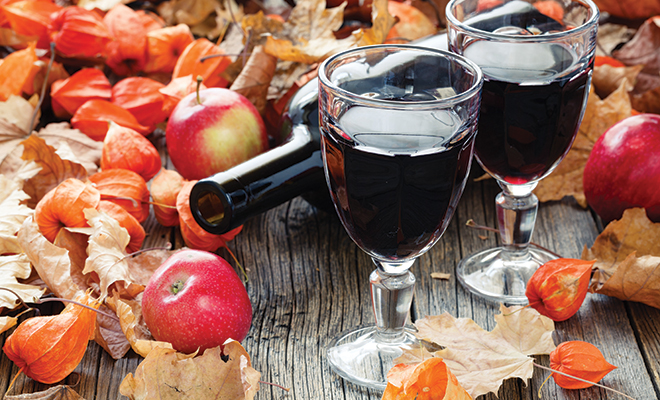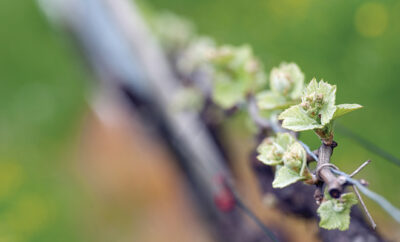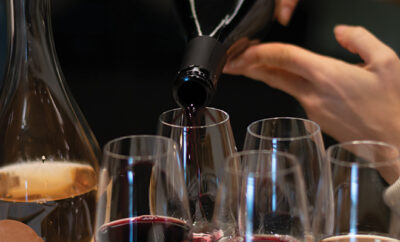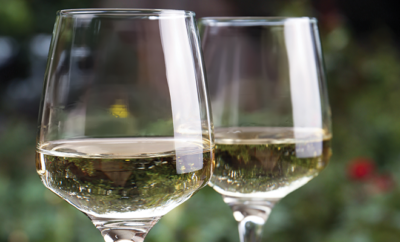
Wines of Oktoberfest
If you’re seeking three weeks of fun and frolic in beer, food and music, look to the annual celebration of Oktoberfest, notably the world’s largest tribute and celebration held in Germany from late September through early October.
L ocally, your fairgrounds or restaurant district may organize a festival that will likely celebrate all things Bavarian, modeled after the event in Munich, Germany, first held in 1810. German clubs in your area may enjoy sharing authentic German food in an outdoor environment of live music, family-friendly activities and dancing. If you’ve ever heard, “Everyone’s Irish on St. Patrick’s Day,” then you’re sure to enjoy the savory fun associated with Oktoberfest but without the green beer. Traditionally, fall is the time we start entertaining ourselves and others inside our homes. Making people feel cozy and comfortable is referred to as “gemütlichkeit,” which conveys the comforts of home that we offer through hospitality.
Believe it or not, Germany is not the number one consumer of beer in the world. According to a 2015 report in The Telegraph, Czech Republic, at 142 liters per person annually, and Seychelles came in first and second to Germany’s fourth place. Where do U.S. beer drinkers rank? We ranked 12th with an average of 75 liters per person per year.
If you think Oktoberfest is just for beer lovers, think again! There are many ways to celebrate the season with plenty of room for wine, ciders, mulled wines and mead, a fermented honey-based alcoholic beverage. Since Germany is home to 13 wine regions, we’ll start with the most southwestern part of the country, where the temperature is warmest.
Contrary to popular belief, not all German wines are sweet, although before the modern advances of wine making, it was traditional to add sweeteners to the fermenting grapes because sometimes the current vintage simply did not thoroughly ripen. This process left a fairly prominent sugary consistency to the wines of the mid-20th century. That palate lingers today as Germany tries to shake off the too-sweet reputation by presenting more complex wines with more dryness and fruit balance. Generally unoaked, today’s German wines are mostly white wines from riesling, pinot gris and pinot noir vineyards. If you’re looking for a quality dessert finish for German dishes, seek out a spätlese wine in the riesling section of your favorite market. German for “late harvest,” spätlese is the perfect balance of sweetness with a dry finish, wonderful with spicy sausages or for sipping by the firepits as an aperitif.
Both pinot gris and rieslings are the most popular “weisswein,” white wines for Oktoberfest. Pinot gris grapes grow into a gray to pinkish-brown and sometimes black color in tight bunches. Even though pinot gris wines are mostly white, there can be a slight golden to pink hue to the wine depending on how long the juice is in contact with its beautiful dark skins. Considered a spicier wine, pinot gris is reminiscent of champagne in which the bubbles have diminished and the fresh yet tantalizing dryness of fruit remains. Pairing domestic or German pinot gris with smoked brats, sausages and German potato salad would be perfect. Even pickled meats, fish and vegetables have a fun pairing with pinot gris and rieslings, which can vary greatly in sweetness and dryness.
For the red wine lovers in your crowd, stock up on “rotwein,” red wines to enjoy with appetizers, main courses and desserts such as gingerbread. Pinot noir, or “spätburgunder” wines, are the most popular red wines, made in a dry style and sometimes produced as rosé styles that have a hint of strawberry. These wines should be a bit smoky, with dark cherry tannins and bright acidity. If your menu includes roasted or smoked duck, grilled portabella or oysters, pinot noir wine is a lovely complement. If you are looking in your own wine cellar, merlot blends will also complement your Oktoberfest menu; red wine blends tend to be smooth, fruit forward and easily enjoyed.
For an alternative beverage any time of year, the shandy or radler is popular for those who want to lighten up their beer experience by using half light beer and half lemon soda in a chilled glass. The bitterness of the beer is softened and sweetened by the soda; it’s often referred to as brunch beer during football season and Oktoberfest celebrations.
Since parades and games are important activities of Oktoberfest, you can certainly create a display of spirits for everyone to try while enjoying the festivities. Making a wine matching and tasting game out of the German wines can be fun, especially using German vocabulary for the entire menu. ■
Sources: foodandwine.com, statista.com, thespruceeats.com, wineoh.tv and winewisdom.com.







